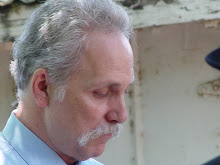A Phantom Arm & A Bizarre Experience My right leg seems trapped in time and space, at a day and place long ago. Along the leg runs a large scar that always tingles in the background of my consciousness, and which tightens into fear whenever I focus attention there. Yes, it is unmistakable fear, in memory of the event itself, and it is localized at the scar. How can fear be in a scar? I don't know. I can only tell you that's where it is. If anything touches the scar, my leg wants to pull away from the touch. This occurs and over-rules my reason. It simply happens. It is all a phantom of the mind.Such phantoms are not unique to me. People have experienced them for thousands of years, but they received a name only in the Nineteenth Century. The Civil War was a gruesome conflict. My ancestor, Captain David Stewart, 28th Iowa Volunteer Infantry, spent part of the war as a field surgeon. He reached a point when he could no longer look at another gangrened leg, or another soldier quite literally biting the bullet to keep from screaming in pain as a limb was sawn through. Preferring being shot to cutting off another leg, Captain Stewart asked for a transfer to combat. I understand why. I have seen the saw he used for amputation. Its teeth could as easily cut through a tree limb. After the Civil War, tens of thousands of soldiers had amputated limbs and told doctors of strange experiences. Silas Weir Mitchell, a Philadelphia physician, coined the phrase "phantom limb" shortly after the conflict, and did so to explain the phantoms that the veterans described. Fearing ridicule from colleagues, he published anonymously in a popular magazine, Lippincott's Journal, wherein he described the phenomenon. In the century and a half since, phantom limb syndrome has become part of medical and psychological literature.Older medical journals contain hundreds of fascinating case studies. Some of the described phenomena have been confirmed repeatedly and still need an explanation. In one case, a patient experienced a vivid phantom arm soon after amputation, which is normal, and in a few weeks he developed a peculiar, gnawing sensation in his phantom, which is not normal. He was quite puzzled by the these new sensations and asked his Army doctor about them, but the physician couldn't help. The veteran finally asked, "Whatever happened to my arm after you removed it?" The doctor told him to ask the surgeon.The veteran did just that. The surgeon replied, "Oh, we usually send the limbs to the morgue." The man asked the morgue and asked, "What do you do with amputated arms?" They replied, "We send them either to the incinerator or to pathology. Usually we incinerate them." "Well, what did you do with my arm?" They looked at their records and said, "You know, it's funny. We didn't incinerate it. We sent it to pathology."The man asked the pathology lab. "Where is my arm?" They said, "Well, we had too many arms, so we just buried it in the garden, out behind the hospital."They took him to the garden and showed him where the arm was buried. When he exhumed it, he found it crawling with maggots and exclaimed, "Maybe that's why I'm feeling these bizarre sensations in my arm." He took the limb and incinerated it. His phantom pain disappeared permanently.
Subscribe to:
Post Comments (Atom)

No comments:
Post a Comment